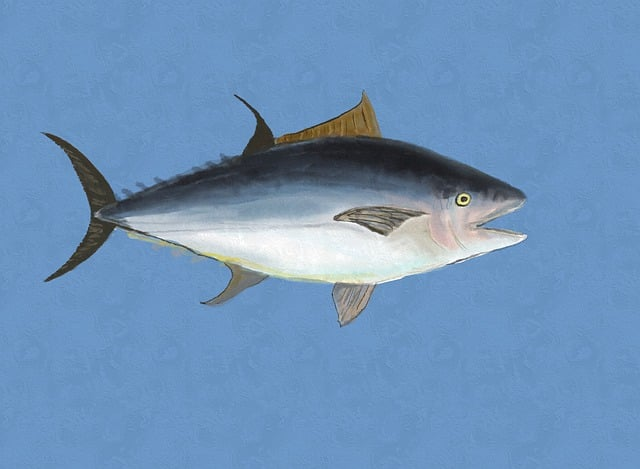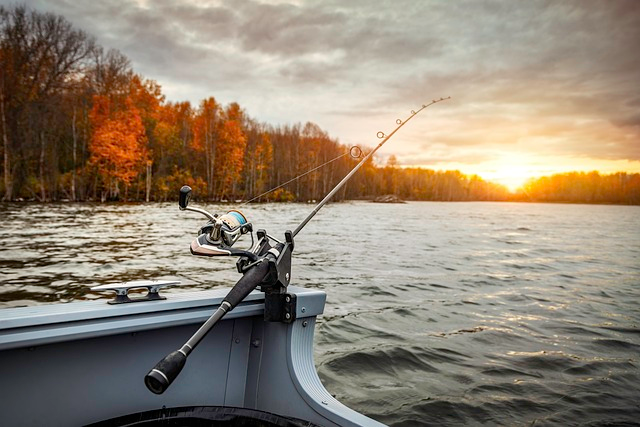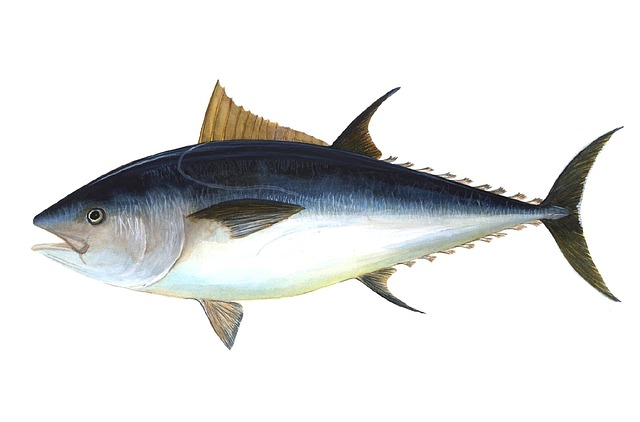Tuna Fishing in Rhode Island
Rhode Island’s coastal waters offer an exhilarating playground for anglers seeking the thrill of targeting tuna. This comprehensive guide is designed to equip you with all the knowledge you need to make the most of your tuna fishing adventures in Rhode Island.
From the impressive Bluefin Tuna to the agile Yellowfin Tuna and flavorful Albacore Tuna, we’ll explore the various tuna species that inhabit these waters. Discover the best time to embark on your fishing expedition as we look into seasonal patterns and peak months for tuna fishing.
Types of Tuna in Rhode Island
In the waters of Rhode Island, various tuna species graces the coastal region, attracting avid anglers seeking thrilling experiences. The most prominent tuna species found in Rhode Island include the Bluefin Tuna, Yellowfin Tuna, and Albacore Tuna.
The giant Bluefin Tuna, known for their impressive size and strength, can reach astounding weights and provide an exhilarating challenge for anglers. They are highly migratory and tend to travel in large schools, making them a prized catch.
Yellowfin Tuna, prized for their speed and agility, is another popular species in Rhode Island waters. These tuna possess a distinctive yellowfin tuna derived from their name. They are known for their remarkable fighting abilities and are sought after by anglers for their sporty nature.
Though smaller than Bluefin and Yellowfin, the Albacore Tuna are highly regarded for their delectable taste. They exhibit streamlined bodies and are often characterized by their long pectoral fins.
Encountering these various tuna species in Rhode Island’s waters provides anglers with diverse opportunities and challenges, ensuring an exciting and rewarding fishing experience for those who venture out in pursuit of these magnificent fish.

Best Time for Tuna Fishing in Rhode Island
The best time for tuna fishing in Rhode Island is typically from June to November. This period offers favorable conditions and increased activity of tuna in the region.
September and October are the peak months for tuna fishing in Rhode Island. During these months, the waters are warmer, attracting large schools of tuna as they migrate through the area. The abundance of baitfish and favorable currents further contribute to the heightened activity of tuna during this time.
Anglers can take advantage of the peak season by planning their fishing trips accordingly. Monitoring water temperatures, oceanographic conditions, and bait availability is recommended to pinpoint the optimal time for targeting tuna.
While the peak season offers the highest chances of success, tuna can still be caught during other months within the June to November timeframe. Anglers may find varying degrees of tuna activity depending on the specific conditions and migrations in a given year.
Tuna Fishing Techniques and Equipment
When it comes to tuna fishing, sturdy and reliable equipment is essential to handle the strength and endurance of these powerful fish. Opt for medium to heavy-duty rods with a good backbone and sufficient flexibility. Pair them with high-quality reels capable of holding ample line capacity.
Braided lines are commonly preferred for tuna fishing due to their strength, sensitivity, and thin diameter, allowing for increased line capacity on the reel. Consider using a line with a breaking strength suitable for the size of tuna you are targeting.
The choice of bait and lures plays a crucial role in attracting tuna. Live bait such as mackerel, squid, or herring is highly effective in enticing these predatory fish. Rig live bait on circle hooks or J-hooks to maximize hook-up rates.
Artificial lures like poppers, jigs, and swimming plugs can entice tuna successfully. Select lures that mimic the appearance and movement of the tuna’s natural prey. Experiment with different colors and sizes to determine which ones work best for your target tuna species.
Trolling is a popular technique for targeting tuna. Deploying rigged baits or lures behind a moving boat allows you to cover a larger area and increase the chances of encountering feeding tuna. Adjust trolling speeds based on the tuna’s feeding behavior and the effectiveness of the bait presentation.
Chunking involves cutting baitfish into chunks and dispersing them in the water to attract tuna. This technique creates a scent trail, enticing the fish to gather near the boat. It is often combined with other techniques like live bait fishing or trolling.
Casting and retrieving lures can also be effective, particularly when tuna feed near the surface. Make long casts into feeding frenzies or around schools of baitfish, and retrieve the lure at a speed miming the natural movement of fleeing prey.

Top Tuna Fishing Spots in Rhode Island
Rhode Island offers an array of productive fishing spots known for their abundant tuna. Here are some of the top tuna fishing spots in Rhode Island:
Block Island: Located south of mainland Rhode Island, it is renowned for its excellent tuna fishing. The deep waters surrounding the island attract various tuna species, making it a hotspot for anglers.
Cox Ledge: Situated offshore from Point Judith, Cox Ledge is a productive fishing ground for tuna. Its underwater structure and nutrient-rich waters create an ideal habitat for these prized fish.
The Canyons: Offshore canyons such as the Hudson Canyon and the Toms Canyon offer exceptional opportunities for tuna fishing. These deep-sea locations are known for attracting large aquatic species, including tuna.
The Fingers: Located east of Block Island, The Fingers is a series of underwater ridges that provide favorable conditions for tuna fishing. Its proximity to major ocean currents contributes to its productivity.
Southwest Ledge: Situated southwest of Block Island, Southwest Ledge is a popular fishing spot for various species, including tuna. Its structure and proximity to deep water make it an attractive location for anglers.
Narragansett Bay: While known for its inshore fishing opportunities, Narragansett Bay can also produce tuna catches, particularly during periods of baitfish abundance and favorable conditions.
Brenton Reef: This nearshore fishing spot off Newport attracts tuna as they feed on baitfish around the reef. It offers convenient access for anglers seeking productive tuna fishing closer to the shore.
When planning your tuna fishing trip, consider these top spots in Rhode Island, but also stay updated on current fishing reports and consult with local experts to maximize your chances of success.
Rhode Island Tuna Fishing Regulations and Licensing
When engaging in tuna fishing in Rhode Island, adhering to the fishing regulations and restrictions is crucial to protect the fishery and ensure its sustainability. Some key regulations and restrictions include:
Size and Bag Limits: Rhode Island has specific size and bag limits for tuna. It is important to familiarize yourself with the current regulations regarding the minimum and maximum size of tuna that can be harvested and the number of tuna allowed to be retained per angler.
Seasonal Closures: Rhode Island may have seasonal closures or restrictions on certain areas or times of the year to protect spawning tuna or reduce fishing pressure. Stay updated on any closures or restricted areas to comply with the regulations.
Gear Restrictions: There may be gear restrictions pertaining to tuna fishing in Rhode Island waters. Pay attention to the types of gear permitted, such as hooks, lines, and nets, and any specific requirements or prohibitions.

Licensing Requirements for Tuna Fishing
To engage in tuna fishing in Rhode Island, anglers must obtain the appropriate charter fishing license. The specific licensing requirements may vary depending on factors such as residency status, age, and the type of fishing (recreational or commercial).
Ensure that you possess the valid fishing license or permit needed for tuna fishing in Rhode Island. Contact the Rhode Island Department of Environmental Management or visit their website for the most up-to-date licensing requirements and fee information.
Safety Tips and Best Practices
When embarking on a tuna fishing adventure in Rhode Island, it is essential to prioritize safety for yourself, your fellow anglers, and the well-being of the fishery. Here are some safety tips and best practices to ensure a safe and enjoyable tuna fishing experience:
Check Weather and Sea Conditions: Monitor weather forecasts and sea conditions before heading out. Avoid fishing in inclement weather or when conditions are hazardous. High winds, rough seas, and storms can pose significant risks, so prioritize your safety and reschedule if necessary.
Maintain Proper Safety Equipment: Ensure you have appropriate safety equipment on board, including life jackets or personal flotation devices (PFDs) for everyone on the vessel. Inspect and maintain safety equipment regularly to ensure they are in good working condition.
Practice Safe Boat Operation: Operate your boat safely and responsibly. Follow navigation rules, stay safe from other vessels, and be aware of your surroundings. Operate at a safe speed and be cautious when maneuvering near other anglers or fishing structures.
Stay Hydrated and Protect from Sun Exposure: Tuna fishing trips can be physically demanding and expose you to prolonged sun exposure. Stay hydrated by drinking plenty of water and protect yourself from the sun’s rays by wearing sunscreen, a hat, and protective clothing.
Use Proper Handling Techniques: Handle tuna carefully to minimize stress and injury to the fish. Wet your hands before handling to prevent removing the fish’s protective slime layer. Utilize appropriate tools, such as de-hookers or lip-gripping devices, to safely handle and release tuna.
Practice Catch-and-Release: Consider catch-and-release practices to promote conservation. If you catch a tuna that does not meet the size limit or bag limit, carefully release it back into the water to ensure its survival and contribute to the sustainability of the fishery.
Respect Fishing Regulations: Familiarize yourself with and adhere to all fishing regulations, including size limits, bag limits, and seasonal closures. Respect protected areas and conservation measures to contribute to the long-term health of the tuna population.
Maintain a First Aid Kit: Carry a well-stocked kit that includes essential supplies such as bandages, disinfectant, seasickness medication, and any necessary prescription medications.

Frequently Asked Questions
Can you catch tuna in Rhode Island?
Yes, you can catch tuna in Rhode Island. Rhode Island’s coastal waters provide a productive habitat for various tuna species, including Bluefin Tuna, Yellowfin Tuna, and Albacore Tuna. Anglers target tuna in these waters, particularly during the peak season from June to November.
Where can I find bluefin tuna in Rhode Island?
Bluefin tuna can be found in Rhode Island’s coastal waters, particularly in offshore areas. Popular spots for targeting Bluefin tuna include Block Island, Cox Ledge, and the canyons such as Hudson Canyon and Toms Canyon. These areas provide favorable conditions and attract large schools of Bluefin tuna during their migratory patterns.
What month is best for tuna fishing?
The best time for tuna fishing is during the summer months of June, July, and August, with the largest abundance of fish. Tuna can also be productive in September, October, and November, although the numbers may be slightly lower.
Wrap Up
Tuna fishing in Rhode Island offers an exhilarating and rewarding experience for anglers. With its diverse tuna species, prime fishing spots, and seasonal abundance, Rhode Island’s coastal waters provide ample opportunities to pursue these prized fish.
Whether targeting Bluefin, Yellowfin, or Albacore tuna, the waters of Rhode Island promise excitement, challenge, and the chance to create unforgettable moments on the open seas.
In the latest issue of Forward Fishing News, bluefin tuna fishing is experiencing a notable rise, with an influx of school bluefin tuna and sea bass in the marine panorama. Concurrently, there’s an exciting comeback in striped bass fishing, offering a more varied and fruitful experience for fishing enthusiasts seeking striped bass and bluefin tuna.
